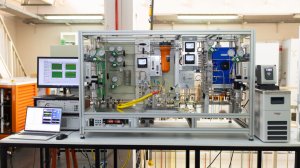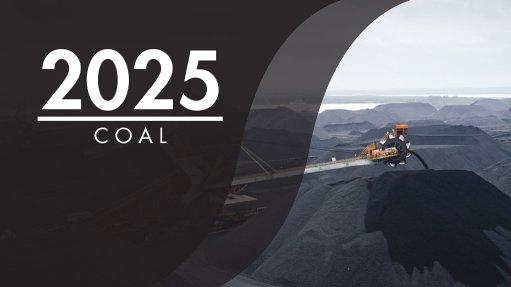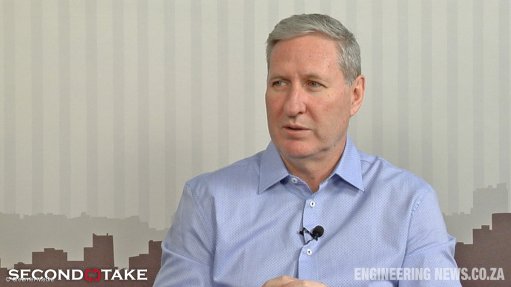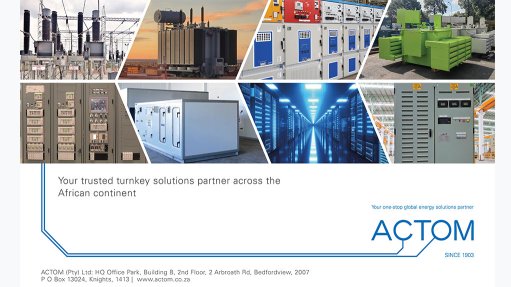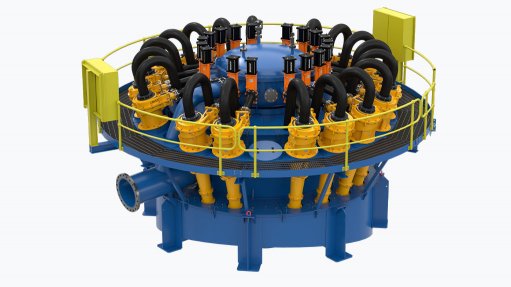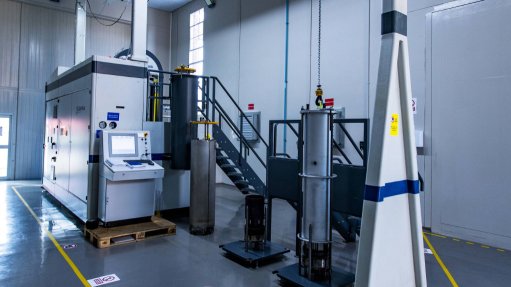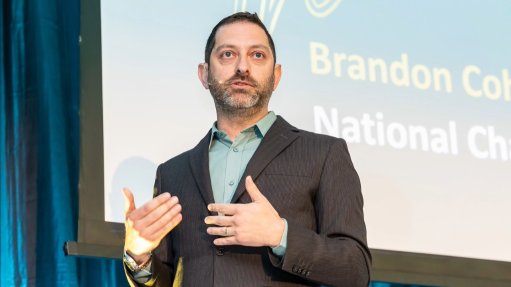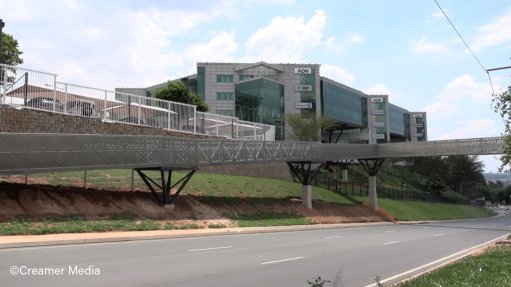Innovation group adds more tech to portfolio


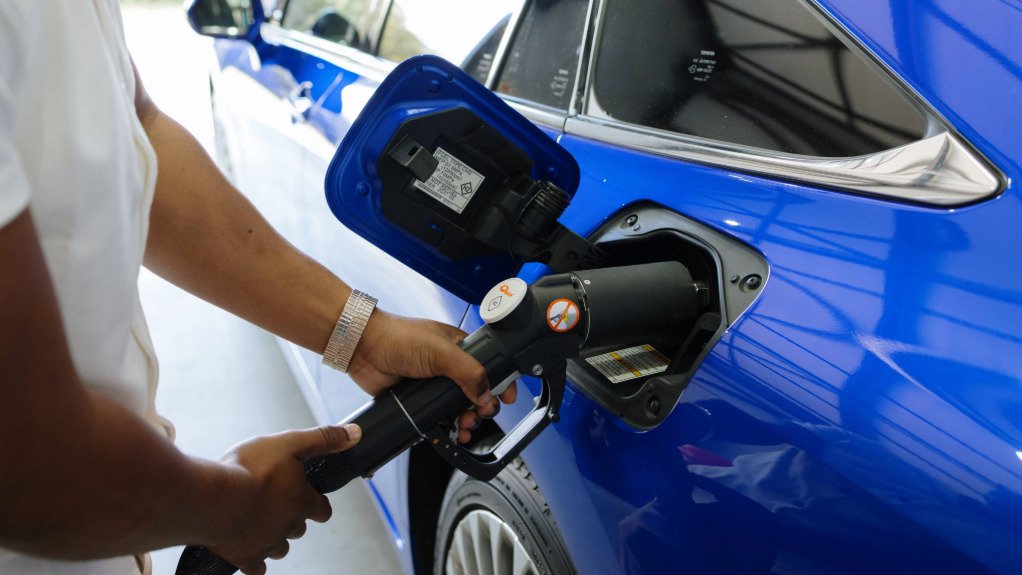
TESTING THE Waters HySA Infrastructure continues to add new technologies to its portfolio including new water electrolysis testing stations
FILL'ER UP HySA have joined forces with NWU and developed a hydrogen refuelling systems for cars like the Toyota Mirai
To remain at the forefront of driving South Africa’s strategic energy objectives, the National Hydrogen and Fuel Cells Research Development and Innovation Strategy, known as Hydrogen South Africa, or HySA, continues to advance green hydrogen technologies for a sustainable future, says HySA Infrastructure’s Centre of Competence (CoC) director Professor Dmitri Bessarabov.
HySA has made considerable progress along several technical frontiers, including high-power-density electrolysis systems, the adaptation of hydrogen refuelling protocols for local conditions and advanced hydrogen safety systems.
“We have also launched novel liquid organic hydrogen carriers- (LOHC-) based storage technologies, and new diagnostic and characterisation methods for components and systems,” he states.
Bessarabov adds that recent infrastructure milestones include the completion of a “state-of-the-art” rapid prototyping training and testing facility at tertiary education institution North-West University (NWU) for hydrogen technologies, as well as the commissioning of locally designed electrolysis test stations and electrolyser stack platforms.
Hydrogen Valley
In line with South Africa’s National Develop-ment Plan 2030, which calls for an inclusive, low-carbon energy system, the HySA Infrastructure CoC has proposed the establishment of “mini hydrogen valleys”, which are localised clusters that demonstrate integrated hydrogen ecosystems.
These valleys would encompass hydrogen production, often using dedicated renewable sources, storage and distribution infrastructure, in addition to servicing mobility, industry and other end-users within a defined region, says Bessarabov.
He points out that such mini valleys would help demonstrate the scalability and cross-sector value of hydrogen, providing a bridge from demonstration to industrial-scale adoption.
Although most hydrogen valleys are based in Europe, similar initiatives are emerging globally.
“South Africa’s proposed hydrogen mini valley would be a first-of-its-kind on the continent and could serve as a regional model,” Bessarabov enthuses, while noting that the implementation will require alignment among public and private stakeholders, strong policy support and sustained investment.
Collaboration Partners
The HySA CoC collaborates actively with international partners, including Japan and EU member States, and works closely with local industry leaders such as energy and chemicals group Sasol, State-owned power utility Eskom, and automaker Toyota South Africa Motors.
“Together, we are advancing projects in water electrolysis, green ammonia, hydrogen refuelling and hydrogen storage.”
The HySA Infrastructure CoC – co-hosted by NWU and the Council for Scientific and Industrial Research – plays a leading role in developing hydrogen technologies and supply chains aligned with South Africa’s strategic energy objectives, adds Bessarabov.
Within the NWU mandate, the HySA CoC focuses on several core areas, including the development and validation of advanced proton exchange membrane (PEM) water electrolysis systems and components for green hydrogen production and storage.
Hydrogen refuelling systems, particularly for unmanned aerial vehicles and sustainable mobility applications, have been developed, while the concept of green ammonia synthesis and integration into energy systems has been explored.
Hydrogen Hardships
Bessarabov says South Africa’s energy landscape presents challenges and opportunities.
“While large areas lack grid access, others suffer from saturation,” he cites.
Within this framework, HySA CoC is creating hydrogen-driven technologies for sophisticated energy storage, remote power supply, energy transportation, and industrial applications.
These solutions also promote beneficiation of South Africa’s mineral resource wealth – particularly platinum-group metals, such as iridium and platinum – by integrating them into high-value technologies.
In addition to research and development, the HySA CoC is committed to human capacity development, through training young scientists and engineers to support the growing hydrogen economy locally and globally.
A key performance indicator of the growth of the hydrogen economy is the development, protection and commercialisation of intellectual property.
“Our catalyst-coated membranes for PEM electrolysis exhibit performance metrics on par with leading global technologies.”
HySA has also developed flexible and technically advanced local electrolysis test stations, along with passive hydrogen and LOHC recombination safety systems that have garnered international attention, adds Bessarabov.
Green hydrogen is widely recognised as a crucial element in decarbonising global industry, yet it still faces significant cost and infrastructure challenges; therefore, innovation in production, storage and end-use technologies is essential, he says.
Green hydrogen products in South Africa remain less competitive, owing to high production and distribution costs, underscoring the need for cost-reduction innovation – an area where the HySA CoC is deeply engaged.
“At this critical juncture, South Africa must prioritise international cooperation, industrial partnerships, skilled workforce development, commercialisation pathways and policy frameworks.”
Government support and funding are essential to accelerate the hydrogen economy and position the country as a regional leader in clean energy innovation, he concludes.
Article Enquiry
Email Article
Save Article
Feedback
To advertise email advertising@creamermedia.co.za or click here
Comments
Press Office
Announcements
What's On
Subscribe to improve your user experience...
Option 1 (equivalent of R125 a month):
Receive a weekly copy of Creamer Media's Engineering News & Mining Weekly magazine
(print copy for those in South Africa and e-magazine for those outside of South Africa)
Receive daily email newsletters
Access to full search results
Access archive of magazine back copies
Access to Projects in Progress
Access to ONE Research Report of your choice in PDF format
Option 2 (equivalent of R375 a month):
All benefits from Option 1
PLUS
Access to Creamer Media's Research Channel Africa for ALL Research Reports, in PDF format, on various industrial and mining sectors
including Electricity; Water; Energy Transition; Hydrogen; Roads, Rail and Ports; Coal; Gold; Platinum; Battery Metals; etc.
Already a subscriber?
Forgotten your password?
Receive weekly copy of Creamer Media's Engineering News & Mining Weekly magazine (print copy for those in South Africa and e-magazine for those outside of South Africa)
➕
Recieve daily email newsletters
➕
Access to full search results
➕
Access archive of magazine back copies
➕
Access to Projects in Progress
➕
Access to ONE Research Report of your choice in PDF format
RESEARCH CHANNEL AFRICA
R4500 (equivalent of R375 a month)
SUBSCRIBEAll benefits from Option 1
➕
Access to Creamer Media's Research Channel Africa for ALL Research Reports on various industrial and mining sectors, in PDF format, including on:
Electricity
➕
Water
➕
Energy Transition
➕
Hydrogen
➕
Roads, Rail and Ports
➕
Coal
➕
Gold
➕
Platinum
➕
Battery Metals
➕
etc.
Receive all benefits from Option 1 or Option 2 delivered to numerous people at your company
➕
Multiple User names and Passwords for simultaneous log-ins
➕
Intranet integration access to all in your organisation


